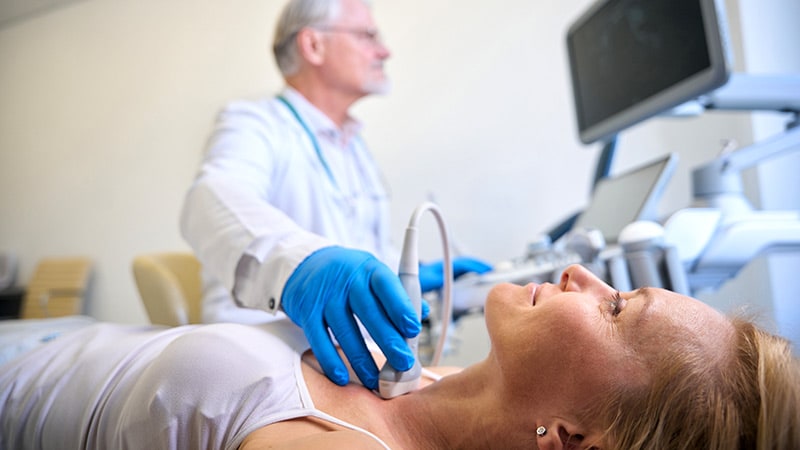AI-Powered Thyroid Ultrasound Analysis System Receives FDA Clearance
The US Food and Drug Administration (FDA) has issued 510(k) clearance to See-Mode Technologies for their AI-based thyroid ultrasound analysis and reporting software. This technology is the first FDA-cleared product that provides both detection and diagnosis for thyroid ultrasound.
The AI software uses single or multinodular thyroid ultrasound images to automatically detect nodules and classify them according to the American College of Radiology's Thyroid Imaging Reporting and Data System (TI-RADS). The system generates a complete worksheet, which the clinician can review and approve before the preliminary impressions are sent to radiology reporting systems.
A multi-reader, multi-case (MRMC) study included in the FDA submission demonstrated that the AI system can improve radiologist performance in nodule localization, characterization, and TI-RADS level agreement, leading to better differentiation between benign and malignant thyroid nodules. The technology aims to reduce reporting time and inter-operator variability in thyroid ultrasound interpretation.
Due to existing Current Procedural Terminology codes for the use of AI in thyroid ultrasound analysis, the system also provides improved reimbursement opportunities.
Налаштувати зведення
Переписати за допомогою ШІ
Згенерувати цитати
Перекласти джерело
Іншою мовою
Згенерувати інтелект-карту
із вихідного контенту
Перейти до джерела
www.medscape.com
FDA Clears AI-Powered Thyroid Ultrasound Analysis System
Ключові висновки, отримані з
by Nancy A. Mel... о www.medscape.com 09-23-2024
https://www.medscape.com/viewarticle/fda-clears-ai-powered-thyroid-ultrasound-analysis-system-2024a1000h8o
Глибші Запити
